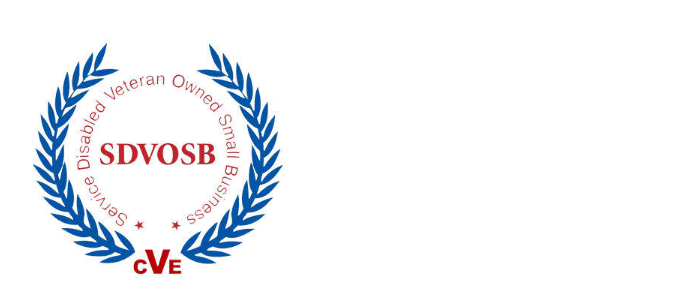Vendor lock-in refers to a situation where a customer becomes dependent on a particular vendor for goods or services, to the point where switching to a different vendor becomes difficult or costly. It is a concept that has gained significant attention in the tech industry, but it can apply to various industries and business relationships.
Understanding the Concept of Vendor Lock-in
Vendor lock-in is a critical concept in business and technology that warrants a closer examination. It occurs when a customer relies heavily on a specific vendor’s products, services, or technologies, making it challenging to switch to an alternative vendor. This reliance can be attributed to various factors, such as proprietary formats, high switching costs, or the integration of systems and processes.
Delving deeper into the complexities of vendor lock-in reveals the intricate web of dependencies that can ensnare businesses. The entanglement often extends beyond the mere utilization of a vendor’s offerings, seeping into the fabric of an organization’s operations and strategic decision-making processes.
The Basics of Vendor Lock-in
Vendor lock-in occurs when a customer relies heavily on a specific vendor’s products, services, or technologies, making switching to an alternative vendor challenging. This reliance can be attributed to a variety of factors such as proprietary formats, high switching costs, or the integration of systems and processes.
For example, consider a business using a cloud-based software solution from Vendor A. If Vendor A’s solution uses proprietary file formats or unique features that are not easily transferrable, the business may find itself locked into Vendor A’s services.
Exploring real-world scenarios where vendor lock-in can manifest sheds light on the nuances of this phenomenon. Organizations entrenched in a particular vendor’s ecosystem may be at the mercy of that vendor’s pricing strategies, product roadmap decisions, and overall business stability.
Why Vendor Lock-in Occurs
Vendor lock-in can arise for several reasons, some intentional and others unintentional.
One common reason for vendor lock-in is the use of proprietary technologies or formats. Vendors can increase customer dependence on their products or services by creating solutions that are difficult to replicate or migrate away from.
Additionally, investing time, money, and resources in implementing a vendor’s products can create a sense of inertia, making it less likely for customers to switch to a competitor. This is known as the “sunk cost fallacy.”
Understanding the underlying motivations behind vendor lock-in is crucial for businesses seeking to navigate the complex landscape of vendor relationships. By recognizing the factors that contribute to this phenomenon, organizations can proactively strategize to mitigate the risks associated with vendor dependency.
The Implications of Vendor Lock-in
Vendor lock-in can have significant consequences for businesses, both financially and operationally.
Businesses must carefully consider the long-term effects of vendor lock-in, as it can impact various aspects of their operations and bottom line.
Financial Impact of Vendor Lock-in
One of the primary concerns of vendor lock-in is the potential financial impact on a business. When locked into a vendor, businesses may face increased costs over time, as vendors often have the power to dictate pricing and renegotiate contracts.
Moreover, the lack of flexibility in pricing and contract terms can hinder a company’s ability to optimize its budget and allocate resources efficiently.
If alternative vendors offer more cost-effective solutions, being locked into an expensive vendor can put businesses at a competitive disadvantage and limit their ability to adapt to changing market conditions.
Operational Consequences of Vendor Lock-in
Vendor lock-in can also have operational implications. Depending on the extent of the lock-in, businesses may find it challenging to integrate new technologies or processes incompatible with the vendor’s offerings.
Additionally, businesses may face constraints in customizing solutions or implementing innovative strategies due to the limitations imposed by the vendor’s proprietary systems.
If a vendor experiences a decline in quality or service, businesses may be stuck with subpar solutions or face obstacles when switching to a different vendor.
Organizations must proactively manage vendor relationships and assess the risks associated with vendor lock-in to safeguard their financial stability and operational agility.
Identifying Vendor Lock-in
Recognizing the signs of potential vendor lock-in is crucial for businesses to make informed decisions and avoid long-term dependencies. Here are some indicators to look out for:

Signs of Potential Vendor Lock-in
One sign of potential vendor lock-in is limited compatibility with alternative solutions. If a vendor’s products or services are not easily interoperable with others on the market, it may indicate a higher chance of lock-in.
Another sign is the lack of flexibility in contract terms. If a vendor imposes rigid terms restricting a customer’s ability to make changes or explore alternative options, it could be a red flag for a potential lock-in.
Additionally, businesses should be wary of vendors who offer exclusive features or services that tie them closely to the vendor’s ecosystem. These unique offerings may initially seem beneficial, but they can also create a barrier to switching to other providers in the future.
Long-term commitments or contracts with hefty early termination penalties can strongly indicate vendor lock-in. Businesses should carefully review the terms and conditions of agreements to understand the implications of ending the relationship prematurely.
Assessing Your Vendor Relationships
To assess your vendor relationships and mitigate the risks of lock-in, it is essential to regularly evaluate factors such as the vendor’s performance, reliability, and willingness to adapt to your changing business needs. Open and transparent communication with vendors is key to maintaining a healthy relationship and avoiding lock-in pitfalls.
Regular vendor audits and performance reviews can provide valuable insights into the level of dependency on a particular vendor. By monitoring key performance indicators and benchmarks, businesses can proactively identify any signs of potential lock-in and take corrective actions to diversify their vendor portfolio.
Strategies to Avoid Vendor Lock-in
Avoiding vendor lock-in requires a proactive approach and carefully considering the vendor selection process. Here are a few strategies to mitigate the risk:

Choosing the Right Vendors
When selecting vendors, conducting thorough research and due diligence is crucial to ensure their solutions align with your long-term goals and are compatible with your existing infrastructure. Look for vendors prioritizing interoperability and open standards and providing clear migration paths.
Considering multiple vendors for critical services can help create a competitive environment, preventing any single vendor from gaining too much control over your business.
It is beneficial to assess the vendor’s industry reputation, financial stability, and commitment to innovation. Understanding the vendor’s roadmap and plans can give you insight into their long-term viability as a partner.
Negotiating Vendor Contracts
A well-crafted vendor contract can also significantly help avoid lock-in. Clearly define terms related to flexibility, data portability, pricing structures, and termination clauses. You can maintain more control over your vendor relationships by negotiating favorable contract terms.
Additionally, consider including clauses that address scenarios such as changes in ownership, service level agreements, and exit strategies. These provisions can safeguard your interests and provide a clear framework for resolving potential disputes in the future.
Managing and Overcoming Vendor Lock-in
Even with careful planning, avoiding vendor lock-in may not always be possible. When lock-in occurs, there are steps you can take to manage and potentially transition away from a locked-in vendor.

Vendor lock-in occurs when a customer becomes heavily dependent on a particular vendor’s products or services, making it difficult to switch to alternatives. It can limit flexibility, increase costs, and hinder innovation. However, by understanding and implementing effective strategies, businesses can mitigate the risks associated with vendor lock-in.
Steps to Mitigate Vendor Lock-in
If locked into a vendor, identify areas within your infrastructure where alternative solutions can be implemented without disrupting critical operations. Gradually introducing alternatives can help reduce dependence on the locked-in vendor.
For example, if you use a proprietary software solution, explore open-source alternatives offering similar functionalities. Open-source software provides the advantage of being customizable and not tied to a specific vendor, giving you more control over your technology stack.
Additionally, explore data migration and conversion options, ensuring that you can move your data and processes to a different vendor if necessary. This includes examining the interoperability of your data formats and ensuring you have access to proper documentation and resources.
Transitioning Away from a Locked-in Vendor
Transitioning away from a locked-in vendor requires careful planning and coordination. Begin by assessing potential alternative vendors and their suitability for your needs. Consider their track record, reputation, and customer support capabilities.
Develop a roadmap for transitioning to the new vendor, including clearly defined timelines and milestones. This roadmap should outline the necessary steps, such as data migration, staff training, and system integration, to ensure a smooth transition.
Engage with key stakeholders and obtain their buy-in early in the process. By involving stakeholders from different departments and levels of the organization, you can proactively gather valuable insights and address concerns. Effective communication and transparent expectations can help mitigate resistance or concerns during the transition.
Consider leveraging the expertise of consultants or third-party advisors specializing in vendor transitions. Their experience and knowledge can provide valuable guidance throughout the process, ensuring a successful transition to a new vendor.
Although it may seem challenging, overcoming vendor lock-in is possible with strategic planning and a clear willingness to adapt and explore alternatives. By diversifying your vendor relationships and staying informed about emerging technologies and market trends, you can maintain flexibility, control, and adaptability in your business operations.
Vendor lock-in should not be taken lightly, as it can have far-reaching consequences for businesses. By understanding the concept, identifying potential lock-in situations, and implementing strategies to avoid and manage lock-in, businesses can safeguard their long-term success and maintain a competitive edge in the ever-evolving marketplace.
As you navigate the complexities of vendor relationships and strive to avoid the pitfalls of vendor lock-in, remember that cybersecurity is a critical component of safeguarding your business’s digital assets. Blue Goat Cyber, a Veteran-Owned leader in cybersecurity excellence, offers a suite of B2B services designed to protect your operations from cyber threats. Our expertise in medical device cybersecurity, penetration testing, and compliance with HIPAA and FDA standards ensures your business is fortified against unauthorized breaches. Don’t let vendor lock-in compromise your cybersecurity posture. Contact us today for cybersecurity help, and take the first step towards a secure and resilient digital future with Blue Goat Cyber.


